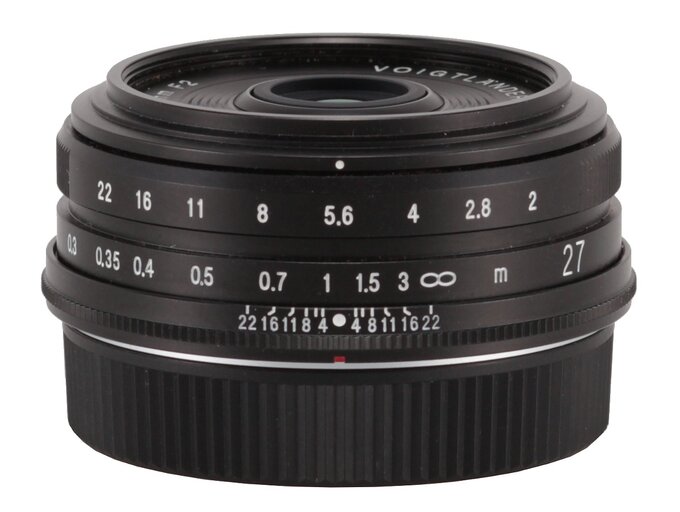Voigtlander Ultron 27 mm f/2
10. Focusing and focus breathing
 |
As we've already mentioned in the chapter describing build quality of the tested lens, such small parts might be challenging, especially if you have big fingers. The focus ring is narrow and not especially well damped, it's easy to change its position inadvertently. It would be far better if the resistance of the ring was more pronounced; we think that, at the same time, the producers should guarantee aperture control from the camera's menu level, not only via the dedicated ring. That way you could have left the aperture ring untouched, avoiding unintentional changes of that easy-moving manual focus ring.
Please Support UsIf you enjoy our reviews and articles, and you want us to continue our work please, support our website by donating through PayPal. The funds are going to be used for paying our editorial team, renting servers, and equipping our testing studio; only that way we will be able to continue providing you interesting content for free. |
- - - - - - - - - - - - - - - - - - - - - - - - - - - - - - - - - - - - - - - - - - - - - - - -
Focus breathing
Focus breathing tests show refraiming images as you oversharp them. We conduct the test by manually passing from the minimum focusing ditance to infinity with the aperture stopped down; then we check how the field of view of the lens changed as a result.After conducting a number of tests now we think we are able to determine some reference points. A frame change ranging from 0 to 5% we consider to be low. Between 5 and 10% you can speak about medium levels. Usually such values constitute also the maximum efficiency level of any breathing compensation algorithms, present in some bodies. Between 10 and 15% focus breathing is high, above 15% its level can be called very high.
The test video of the Ultron lens we present below:






